Ansó, 23 June
by Isabel Isherwood - 14:11 on 23 June 2017
Thanks to Harriet and Christian looking after the girls for a night, Jake and I were able to get away for 36 hours – for the first time in …… well, some years. We decided to take the opportunity to get up into the mountains in Ordesa National Park. After our experience of dormitory-sharing in the Refugio de Respomuso we swore we’d never stay in a refuge again (or not if we could avoid it!), so we took camping gear.
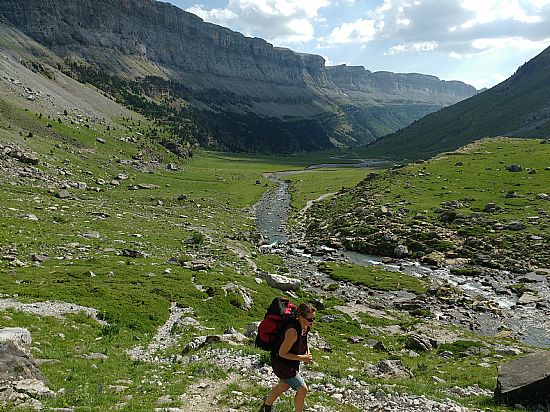
I had seen some photos of Ordesa canyon which made it look rather stark and unbeautiful and which for some reason rather put me off, and this was compounded by somebody telling me that it has 15,000 visitors a day during the summer tourist season. It was true that the carpark was full, and the lower part of the canyon was relatively busy, but it is a big area and is well forested in the lower parts and it manages to swallow up visitors quite well; and once they get to the head of the canyon even the keenest day trippers turn back and only the mountaineers and long-distance walkers head on up the steep paths to the higher ground.
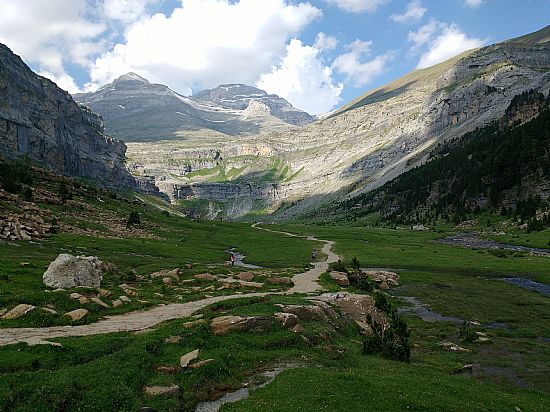
Also I don’t know what pictures I’d seen, but they gave no impression at all of the grandeur and beauty of the canyon. It is spectacular from the moment you leave the carpark, towering rock walls and fabulous forested lower slopes. The path followed the river through arboretum-like silver fir forest, up into mature beech wood, then out into more open woodland with a fabulous understorey of tall flowering plants: globe flowers, asphodels, white lily-like flowers, purple cranesbill, and long-stemmed pyramidal orchids; and finally into open grassy meadow in the head of the canyon, surrounded by towering cliffs and running water. Streams poured down the cliffs or burst up in bubbling springs in the middle of the meadows, and ran in shallow pebbly ribbons to converge on the river, which itself arrives in the canyon by way of the spectacular 60 m Cola de Caballo (Horse’s tail) waterfall. Downstream the river continues in a spectacular series of stepped waterfalls – the Gradas de Soaso, vertical rock steps separated by aquamarine pools - before heading down into the lower canyon.
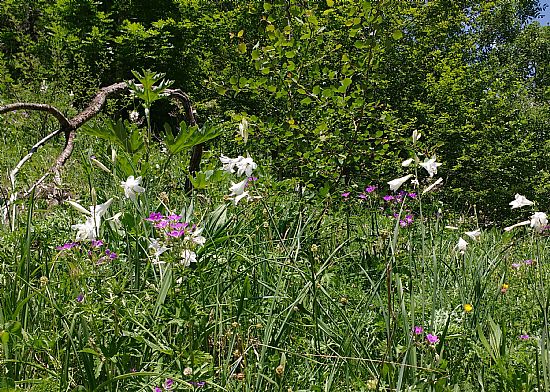
The Cola de Caballo is the most distant destination for day trippers, and above this we were suddenly alone. The path divided here. There is a sensible route for normal people, which I had selected on the basis that I am a big wuss. Then there is a silly route up a rockface with scrambling – although there is a chain to hold onto in some bits, and some metal pegs driven into the rock for wusses who accidentally go the wrong way. At the bottom of this section we met two young blokes who had just descended the rockface, who assured us that it was easy (Note to self: never trust young blokes. Not on anything that might have a macho element to it. Or a bit of risk. Never…..). To be fair, it did look fairly easy. I think it might have been the effect of going mountaineering sans enfants which went to my head. So anyway, somehow we found ourselves going up the silly way. To start with it was OK. But as the exposure increased and the limestone became more polished it got scarier. I started to think about Iona and Rowan and wonder what they would do without me, and at this point became almost paralysed with fear. We made it in the top – crag martins wheeling around our heads – though I had to abandon my bag for the last section and leave Jake to go back for it. Never again. Really, REALLY never again this time!
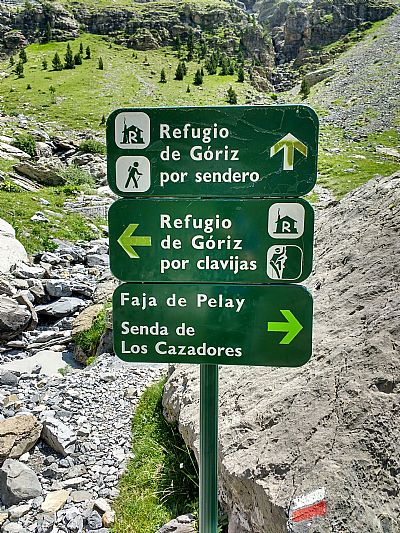
Above the climb, the path rose steadily but gradually through fabulous flowery meadows; but I was swilling with adrenaline (or post-adrenaline – I certainly didn’t feel like running) and had jelly legs and thumping heart and could barely drag myself along, let alone botanise.
We made it to the refuge in time for dinner – at 7pm this is pretty early for Spanish dinner time, but Goriz is a refuge for serious climbing types who head out early. We ate dreadful food and drank wonderful cold beer and pitched our tent on a little terrace among the rocks and watched the sun go down.
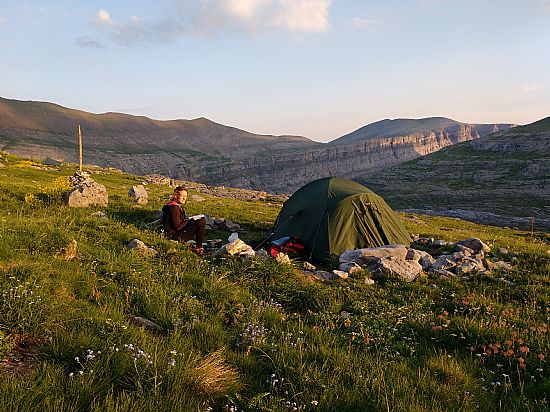
Up at Goriz, tucked into the mountainside below Monte Perdido, the landscape is much starker than down below; masses of exposed rock and boulder fields, with ice patches and small glaciers among the high peaks, with the view to the south scored through by the extraordinary curving gash of the Ordesa canyon. But it is still very beautiful, especially the Goriz valley itself with patches of lush alpine meadow between ribs of limestone, and quiet still pools in the – mostly underground – river. Marmots were everywhere, and a unicorn-like mono-horned chamois grazed unconcernedly thirty yards from our tent. This is the place where the last Pyrenean Ibex lived – a species which, largely through poor management – went extinct as recently as 1990.
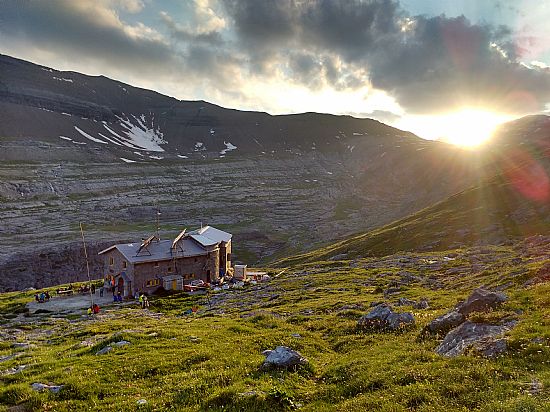
Jake, armed with ice axe and crampons, headed off up Monte Perdido the next morning – an ascent of 1000 m of which the last 300 m is up a steep snow field.
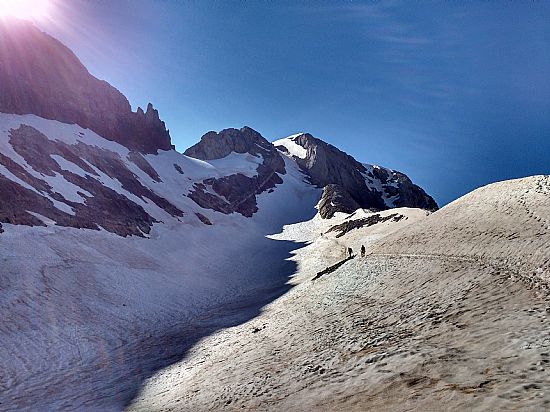
Exposed and scary climbing not being my comfort zone, I spend the morning exploring the high valleys around Goriz, and made my way gradually west as far as a wonderful valley labelled on the map as ‘El Descargador’ or ‘the Discharger’. Wondering what it discharged and half expecting rockfalls, I realised as soon as I got there that it was in fact water – streams and pools and springs, gushing between boulders, trickling over rockfaces, dripping from overhangs, or lying silken and clear over beds of pebbles. Water sound mixed with the screaming of the choughs. In the pools I found caddis larvae and Pyrenean Triton, and on the grassy banks to either side, evidently only recently released from the grip of the snow, grew gentians, pink cranesbill, red and yellow trefoil and tiny purple primulas. At the lowest point of the Descargador all the numerous braided streams and waterways came together, and the roaring mass plunged over a waterfall into a cavernous sinkhole and vanished.
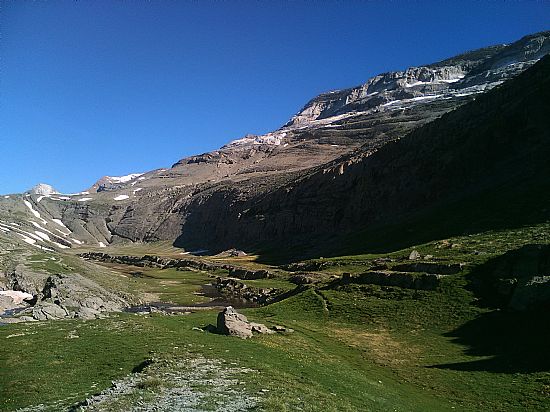
Jake managed to get up and down Monte Perdido in four hours – leaving all the serious-looking but evidently not very fit mountaineers behind. And also surviving unscathed the ascent and descent of La Escupidera, the snow field below the summit of the mountain, which we discovered later is one of the most regular accident spots in the Pyrenees. We had an early lunch in the shade of a rocky outcrop, watching the comings and goings of a helicopter delivering building materials to the refuge, then made the descent back into the canyon – this time taking the sensible route. This time I was able to appreciate the surroundings a bit better, and was excited to find Ramonda, a purple-flowered Pyrenean endemic which I had walked blindly past on the ascent.
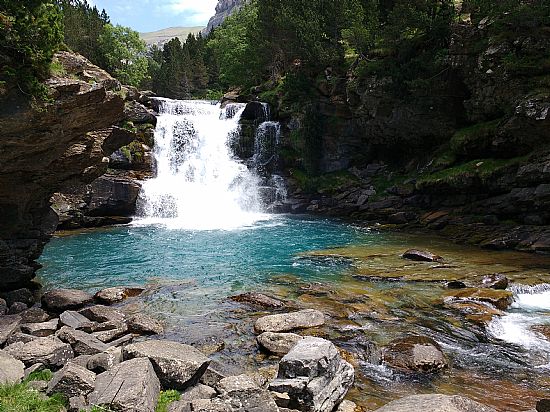
The walk back down the canyon was uneventful, barring a quick stop for Jake to swim and me to soak my feet in one of the ice-cold river pools. But it was a fabulous trip – brief but very memorable; and special too, to have the chance to spend time together in this wonderful environment doing the things that we have always loved doing together.
Add your comment